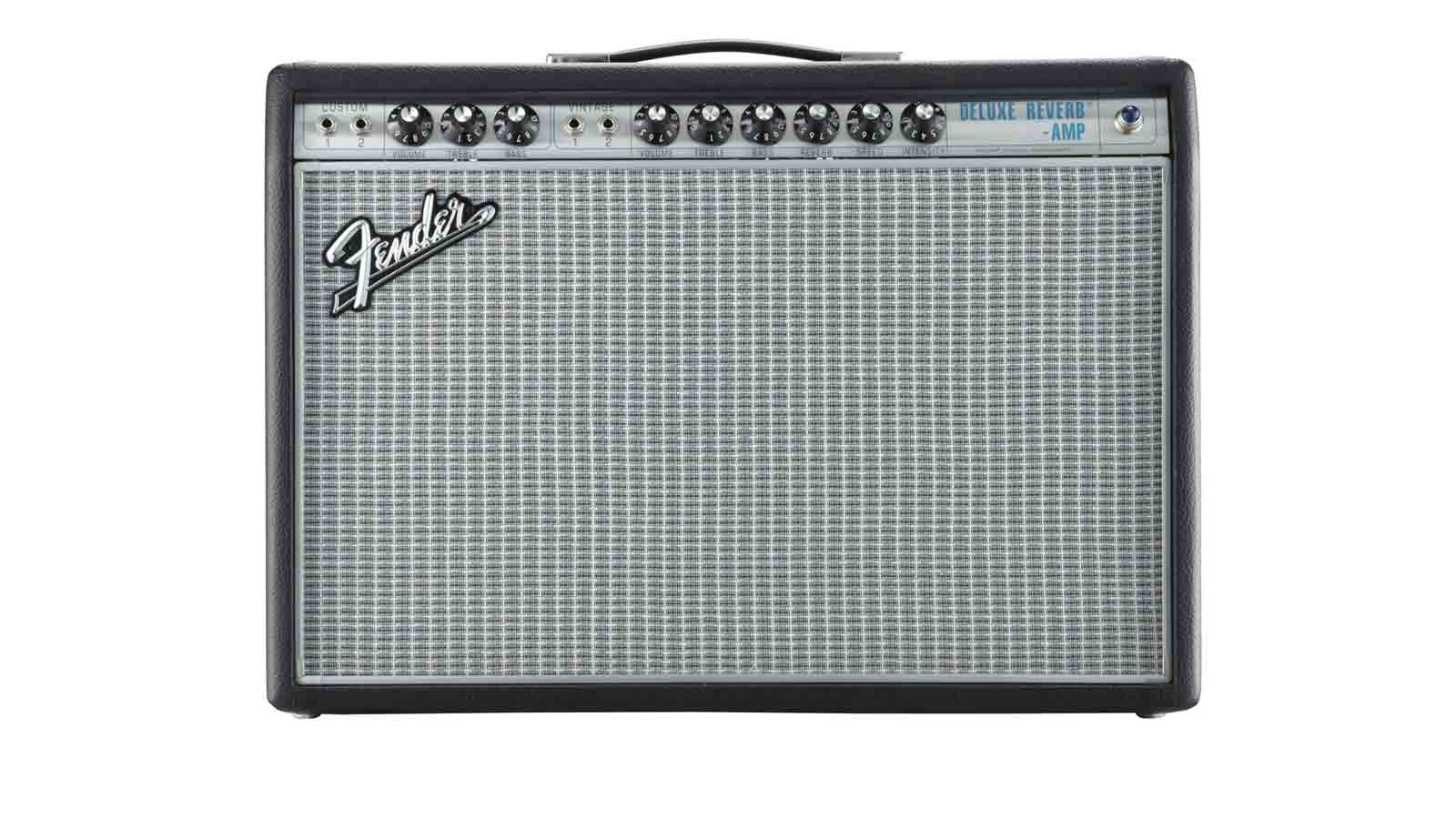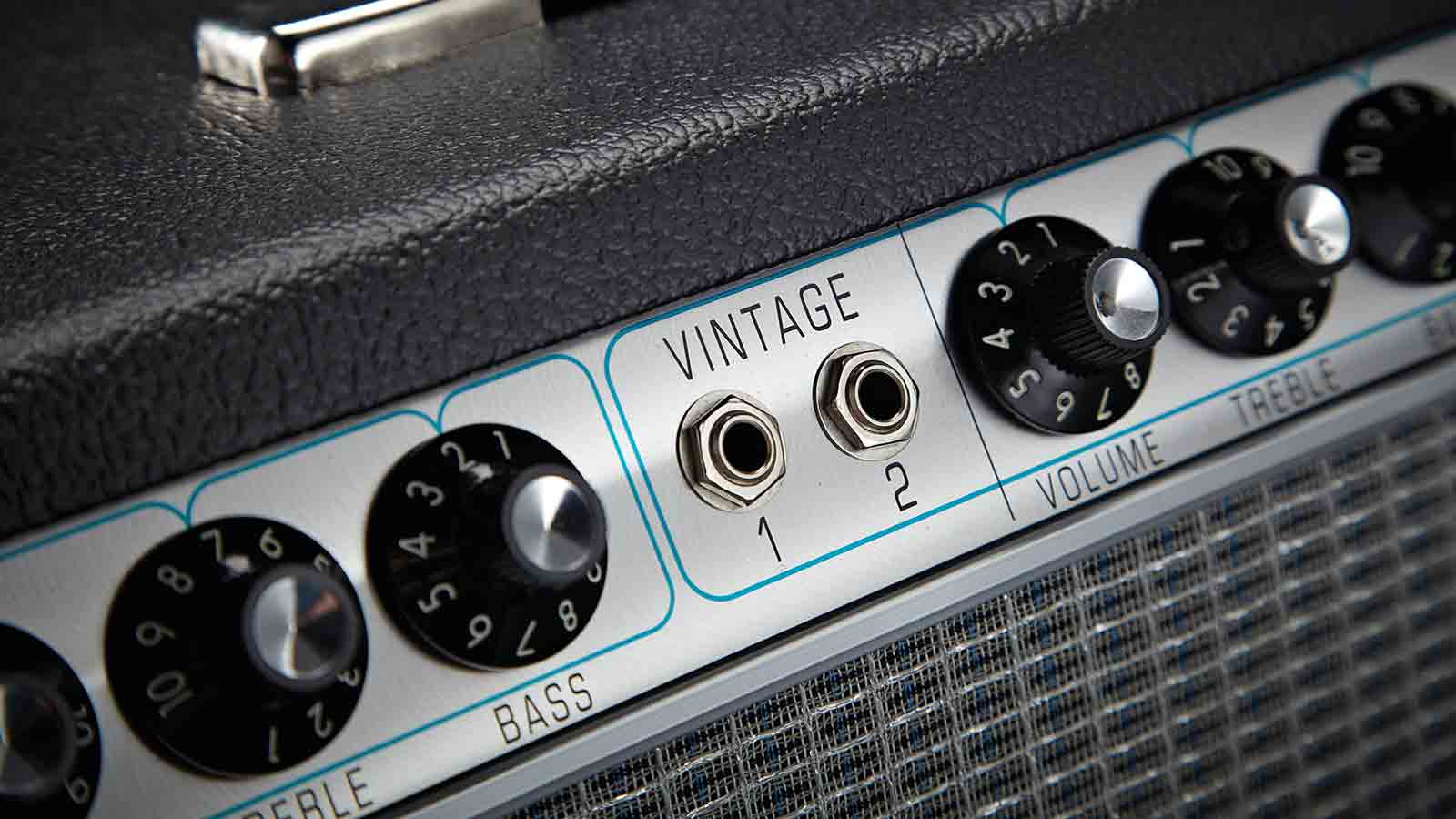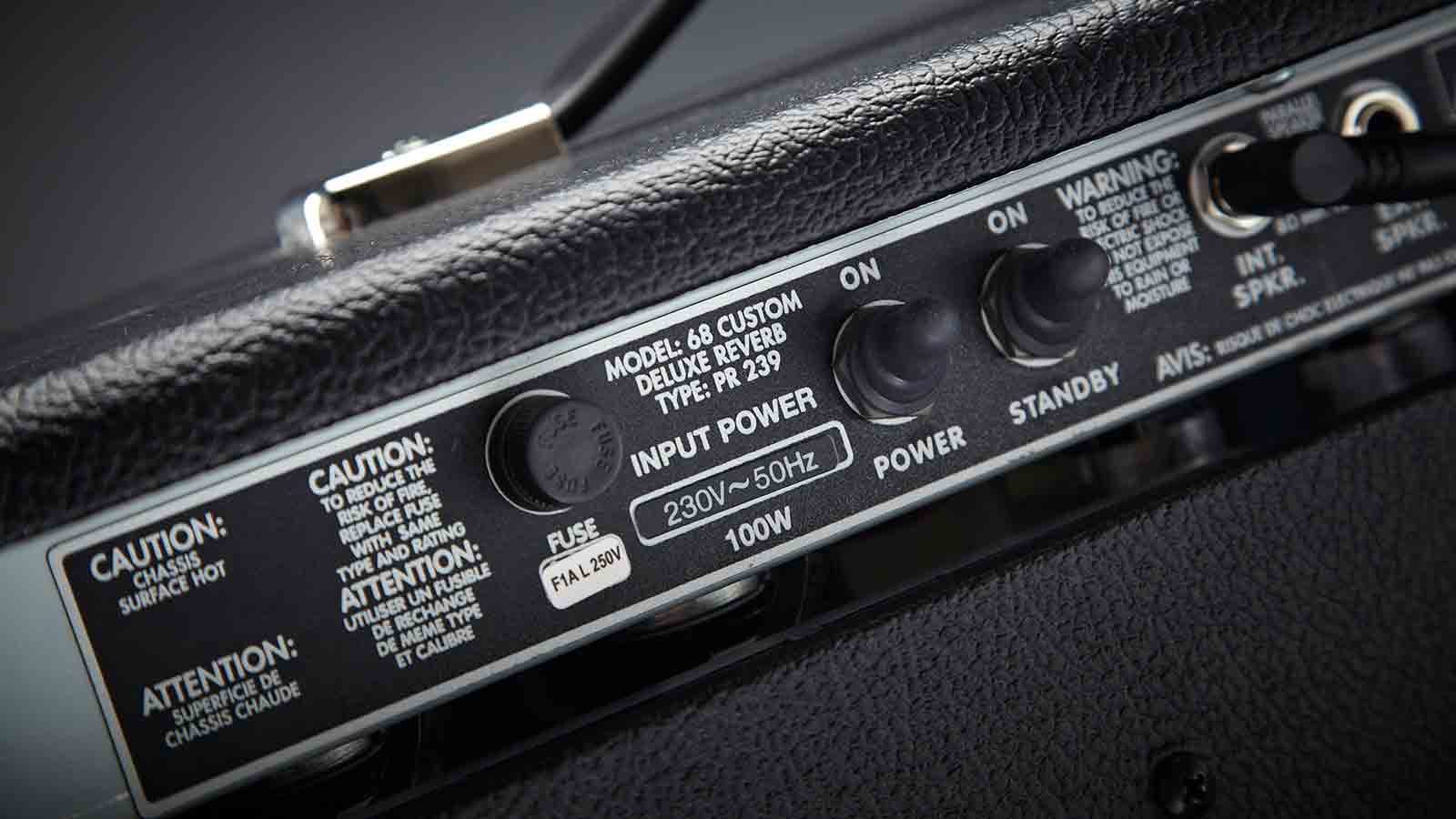MusicRadar Verdict
The definitive 'amp for all occasions' just got even more versatile.
Pros
- +
Well-featured. Practical. Wide range of classic rock tones. Effects sound excellent.
Cons
- -
Boutique pricing.
MusicRadar's got your back

Fender '68 Custom Deluxe Reverb

Inputs

Rear

Fender logo
The '68 Custom Series from Fender aims to combine the spirit of the early 'silverface' era amps with a few contemporary tweaks, rather than providing exacting recreations of the original models. Here we're looking at the Deluxe Reverb.
Among the most immediately noticeable features of the '68 Custom Deluxe Reverb is the silver and turquoise front panel, with narrow vertical black lines separating the control groups - a detail that was swiftly phased out after early production runs - along with a 'drip edge' aluminium grille cloth trim (abandoned in mid-1969) and period-correct 'tailed' Fender logo badge, which was dispensed with in 1973.
On the inside, you'll find typical modern PCB build with a similar layout to the company's corresponding '65 'blackface' reissues, but there are noteworthy differences in the shape of Schumacher transformers, designed to replicate those used in the original class of '68, and some other electronic tweaks.
"There's a new voicing, courtesy of a "modified Bassman tone stack" that's billed as being more pedal-friendly"
Where original Deluxe Reverbs of the period would have had a Normal channel, sans tremolo or reverb, the new '68s have a Custom channel with access to those global effects and a new voicing, courtesy of a "modified Bassman tone stack" that's billed as being more pedal-friendly. Where you would have found a Vibrato channel, there's now a 'Vintage' channel with a more traditional voicing.
The amp is designed to break up a little earlier than its forebear, and features reduced negative feedback, which Fender's marketing blurb claims will offer a greater degree of touch-sensitivity.
Due to current EU RoHS legislation, Fender is unable to ship amplifiers to the UK that feature vintage-style opto-tremolo with a light-dependent resistor in the circuit - cadmium sulphide being the offending material - so the company developed a solution for countries with this restriction in place.
This involves the use of additional analogue components on a sub-PCB within the chassis, that do the job of the lamp/ photocell arrangement found inside US versions of the amplifiers. Purists may justifiably be offended, but let's not all rush out to blockade the Channel Tunnel in protest against European Union bureaucracy.
Despite online grumbles about the possibility of this introducing unwanted noise into the circuit or just generally being A Bad Thing, it hasn't provided us with any sonic cause for concern during our time with any of the '68 Customs we've had on test, and the tremolo sounds are nothing short of lush.
Fender used a variety of different speaker brands throughout the 'silverface' era, such as Oxford, JBL and Utah, but never Celestions, so it's interesting that the company should opt to 'go British' - albeit via China - with a single Celestion G12V-70 in the Deluxe.
It's time to find out what all these modifications mean for the player...
Sounds
"This new incarnation the Deluxe Reverb is arguably more practical than ever"
One of the all-time classic gigging and recording amps, in this new incarnation the Deluxe Reverb is arguably more practical than ever, thanks to the extra versatility offered by being able to utilise the tremolo and reverb on both channels.
It negates the temptation to snip the bright cap on the Vibrato channel, as so many have on both the reissue and vintage models over the years in order to get the amp to play ball with overdrive pedals.
Compared to the '65 reissue's Vibrato channel, the '68 model here has a little less brightness and headroom on the Vintage side, but there's still a magic sweet spot between 4.5 and 6 on the volume control (depending on your choice of guitar), where the amp delivers a wonderful, dynamic dirty-clean rhythm sound at stage level that works as a brilliant core guitar sound for all manner of rock 'n' roll, Americana, blues and classic pop applications. Just add picking-hand dynamics and your guitar's volume control; there's so much range here.
The Custom channel has considerably more grit than a vintage Deluxe Reverb's Normal channel, and some Tweed-like character, too. Fully maxed - if your ears/spouse/neighbour/sound engineer permit - there's a real, grin- inducing Neil Young vibe: it's flabby, compressed and ugly in a thoroughly pleasing way.
The onboard reverb and tremolo are wonderful, classic-sounding musical tools that push and inspire you to play in a certain way. Far more than a means of merely amplifying your guitar sound, this is a musical instrument in itself.
- Explore our full round-up of the best guitar amps around
Chris Vinnicombe worked with us here on the MusicRadar team from the site's initial launch way back in 2007, and also contributed to Guitarist magazine as Features Editor until 2014, as well as Total Guitar magazine, amongst others. These days he can be found at Gibson Guitars, where he is editor-in-chief.
YouTube just added AI tools that makes musicians, library music and video editors redundant
“Every one of them said yes without hesitation": Hank Marvin and Roger Taylor have just remade a '60s classic for charity
Do you know where your money goes when you buy a gig ticket? A new report breaks it down









